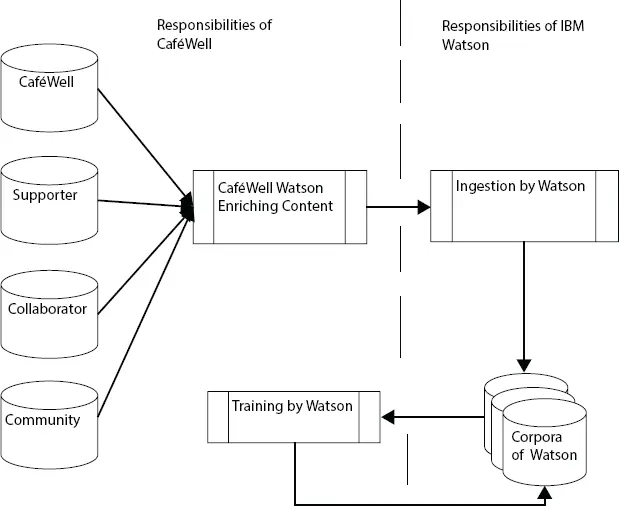The intention of this is to assist the people in understanding their health position and guide them with the customized methods to accomplish good health and also encouraging them by giving rewards to them on meeting their goals. Suppose that a person went to a doctor for a diagnosis of diabetics and taken some tests after the examination. After receiving the results doctor advises losing your weight, by changing the diet and also asks to increase the physical activity. On the other hand, your job makes you travel a lot and also making you take the diet in the outside restaurants. You also don’t have enough time to increase physical activity by spending some time at the gym. Now the question arises what I have to do now? With the increase in technology and the availability of information on the internet, a search can be made on the diabetics. A lot of information, methods, and applications are found on the net and it leads to confusion and also makes us scary. The main important point to note here is a need for personalized support and it can be made possible with the help of the cognitive application because it can provide a better insight with the personal information making it customized to the needs of the person rather than going in a generalized method.
Using IBM Watson’s cognitive capability CafeWell Concierge ( Figure 1.14) built a health application with a lot of support for the people who use it. Using the tracking devices helps to reduce your weight, reminds you to take pills on time, customize your diet based on the BMI, gives information about the restaurants around you with the food choices and also other community support. The main advantage of this is that it will give a tailored and constant support to the user.

Figure 1.14 Content acquisition.
1.14 Advantages of Cognitive Computing
There is a revolution in the automation process in every organization and the pace has increased these days. The organizations have realized that if they do not do it they will be lost in the competition. Cognitive computing helps organizations to take decisions by their executives as it can analyze a large volume of all types of data.
Cognitive computing has a host of benefits including the following:
Precise Data Analysis
These systems are highly productive in analyzing a situation efficiently as they can gather and analyze a large volume of data. In the event we take the instance of the health care industry, these cognitive systems play an important role in assisting the doctors and making things easy for deciding so that life can be saved in time. The cognitive systems gather and dissect the information from different resources for example past clinical reports, past information from the clinical organizations, medical journals, and diagnostic tools that assist the doctors in giving a suggestion based on an information-based treatment that benefits the patients and also the doctors. One important point to know here is that cognitive computing is not going to replace the doctors, but assist them to take decisions faster.
Leaner & More Efficient Business Processes
In real-time the cognitive computing can access the large volume of data and analyze it thereby it can find new business opportunities and also can deal with the basic procedure is driven issues progressively. With the help of IBM Watson, the system can simplify the lengthy process, decrease the risk factors, and guides to take the right path with the varying conditions.
Enhanced Client Interaction
The cognitive computing can assist humans while interacting with clients to provide a better answer to the question posed by him. It can be utilized to automate the client interaction process and provide a better service to the clients. This technology can provide a solution to the client without the need for interaction with the staff. It can provide better relevant information to the customer so that it increases client satisfaction, improve the client experience, and considerably more betrothed with the organization.
1.15 Features of Cognitive Computing
The motivation behind cognitive computing is the making of processing structures that can take care of confusing issues without consistent human intercession. To execute these functions in business and across the board applications, Cognitive Computing consortium has suggested the features as Adaptive, Interactive, Iterative and stateful, and Contextual.
Adaptive: It is the initial step for building a cognitive application. The system should learn to adapt from the surroundings as humans do. It should be dynamic and always well prepared to gather information, learning the objectives, and updating the requirements and goals. This type of system cannot be designed for a single assignment.
Interactive: In human beings, the brain controls the body by connecting with different and gathering information using the senses. In the same manner, the cognitive application should be able to interact with different elements such as processors, gadgets, databases, users, and cloud services. It should make use of various technologies like natural language processing, machine learning, advanced analytics, deep learning probability and statistics, and big data analytics. For interaction with the users, it uses chatbots.
Iterative and stateful: The framework must be able to recall the past interactions in a procedure and return the information whenever necessary. It ought to have the option to characterize the issue by posing inquiries or finding an extra source. This element needs a cautious utilization of the information quality and approval procedures to guarantee that the framework is constantly furnished with enough data and that the information sources it works on to convey solid and state-of-the-art input.
Contextual: They should comprehend, distinguish, and extract relevant components, for example, implications, suitable domains, position, time, guidelines, client’s profile, procedure, errand, and objective. They may draw on various wellsprings of data, including both organized and unstructured computerized data, just as tactile sources of information.
1.16 Limitations of Cognitive Computing
Limited Analysis of Risk
The cognitive applications fail flat when examining the unstructured data. There will be a risk with the unstructured data as it incorporates politics, finance, culture, economy, and public. For instance, there is a prescient model that finds an area for oil investigation even though a lot of people objecting it. Yet, if the nation is experiencing a complete change in the government, then human intervention is required as the cognitive system should also consider this and it cannot be done on its own [9].
Rigorous Training Process
These systems require a lot of training initially to comprehend the procedure and improve, but to do this a lot of data is required at the initial stage itself. The adoption is slow because of this lengthy process of collecting the data and training the system. One fine example of this is the training of IBM Watson by WellPoint’s financial management. When the user uses the Watson the text has to be inspected on each medical policy by the company engineers. The medical staff like the nurses has to upload the data regarding the cases until the cognitive system understands the specific medical situation. Also, the mind-boggling and costly procedure of utilizing cognitive frameworks aggravates it even.
More Knowledge Enlargement Instead of Artificial Intelligence
Читать дальше













